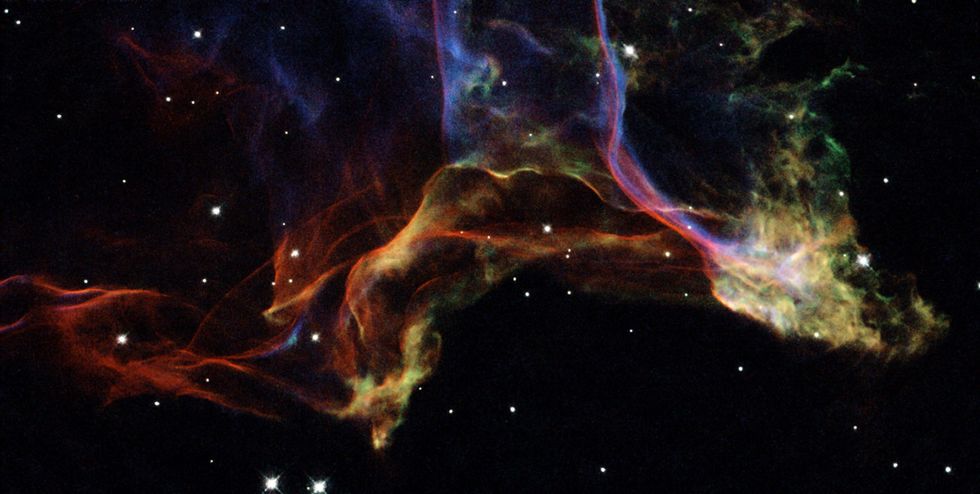Astronomy breakthrough: Stargazers confirm major theory as they record rare ‘hiccuping’ star for the first time

Astronomy breakthrough: Stargazers confirm major theory as they record rare ‘hiccuping’ star for the first time
|PA

The star underwent a series of extreme pulses before exploding
Don't Miss
Most Read
Astronomers have documented a giant "hiccuping" star in its final stages before explosion for the first time, marking a significant breakthrough in understanding massive stellar deaths.
An international team, including researchers from Queens University Belfast, observed the rare cosmic event that only occurs in exceptionally large stars between 60 to 150 times the mass of our sun.
The discovery confirms a theoretical process that scientists have long predicted but never witnessed before.
Researchers say that documenting these "hiccuping" stars represents a major advancement in understanding how massive stars function and their role in shaping the universe.
The phenomenon, known as Pulsational Pair Instability (PPI), occurs when massive stars develop extremely hot cores that rapidly contract and expand in their final days or years.
 Astronomy breakthrough: Stargazers confirm major theory as they record rare ‘hiccuping’ star for the first time | PA
Astronomy breakthrough: Stargazers confirm major theory as they record rare ‘hiccuping’ star for the first time | PADuring each pulsation, the star violently ejects shells of material, gradually stripping down its core.
These ejected shells can collide with one another, resulting in spectacular bursts of light.
Lead researcher Dr Charlotte Angus, from the Astrophysical Research Centre at Queens University, explained that these shell collisions produce much fainter light than the final supernova explosion, which is why the process had remained unconfirmed until now.
In December 2020, astronomers identified a new bright supernova, named SN2020acct, in the nearby spiral galaxy NGC 2981.
SCIENCE LATEST:
Twisted shockwaves and gases from an exploded star - similar to what was produced in the first flare of SN2020acct
|PA
The supernova's light initially faded quickly, but unexpectedly reappeared in February 2021, puzzling researchers.
"This is very unusual as supernovae normally don't reappear," said Dr Charlotte Angus from Queens University Belfast.
The first appearance was caused by slow-moving shells of material colliding near the star.
When it reappeared, the light showed much faster expansion, indicating the star's core had finally exploded, marking its ultimate demise.

Dr Charlotte Angus from their Astrophysical Research Centre (ARC)
|PA
Through detailed modelling, scientists confirmed this first flare was indeed an example of Pulsational Pair Instability.
The research team utilised telescopes across multiple continents to track the supernova, including facilities in Hawaii, Chile, South Africa and the US.
Through their observations, they determined the star was approximately 150 times the mass of our sun and underwent a series of extreme pulses in its final 50 days before exploding.
"This is the first time that we have ever obtained observations of a PPI candidate during the shell collisions, allowing us to confirm for the first time that this is really happening," said Dr Angus.
The research involved collaboration with astronomers from the University of California Santa Cruz and three recent surveys: the Young Supernova Experiment, the ATLAS survey and the PanSTARRS survey.
Dr Matt Nicholl from Queens University's Astrophysical Research Centre emphasised the discovery's importance: "There's still a lot we don't know about massive stars but confirming Pulsational Pair Instability as a real thing is a major step forward in knowledge and greater understanding of these amazing cosmic events."
The groundbreaking findings have been published in the Astrophysical Journal.










